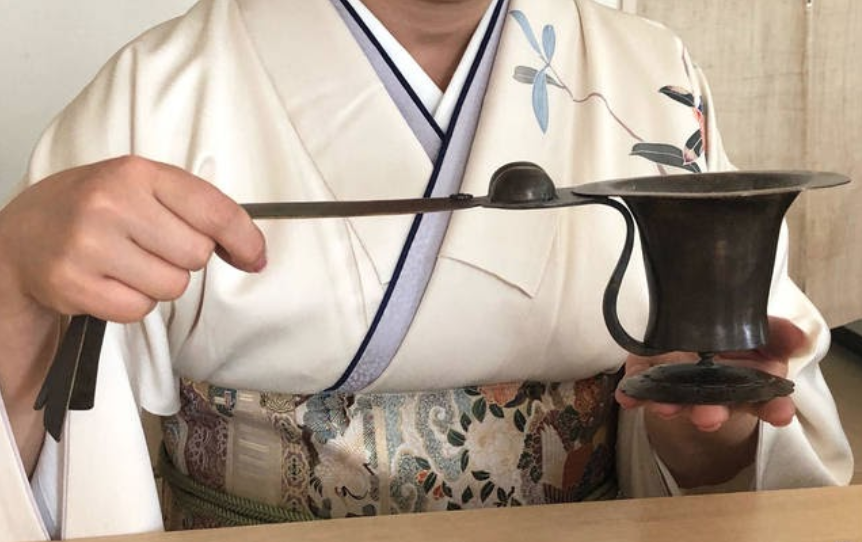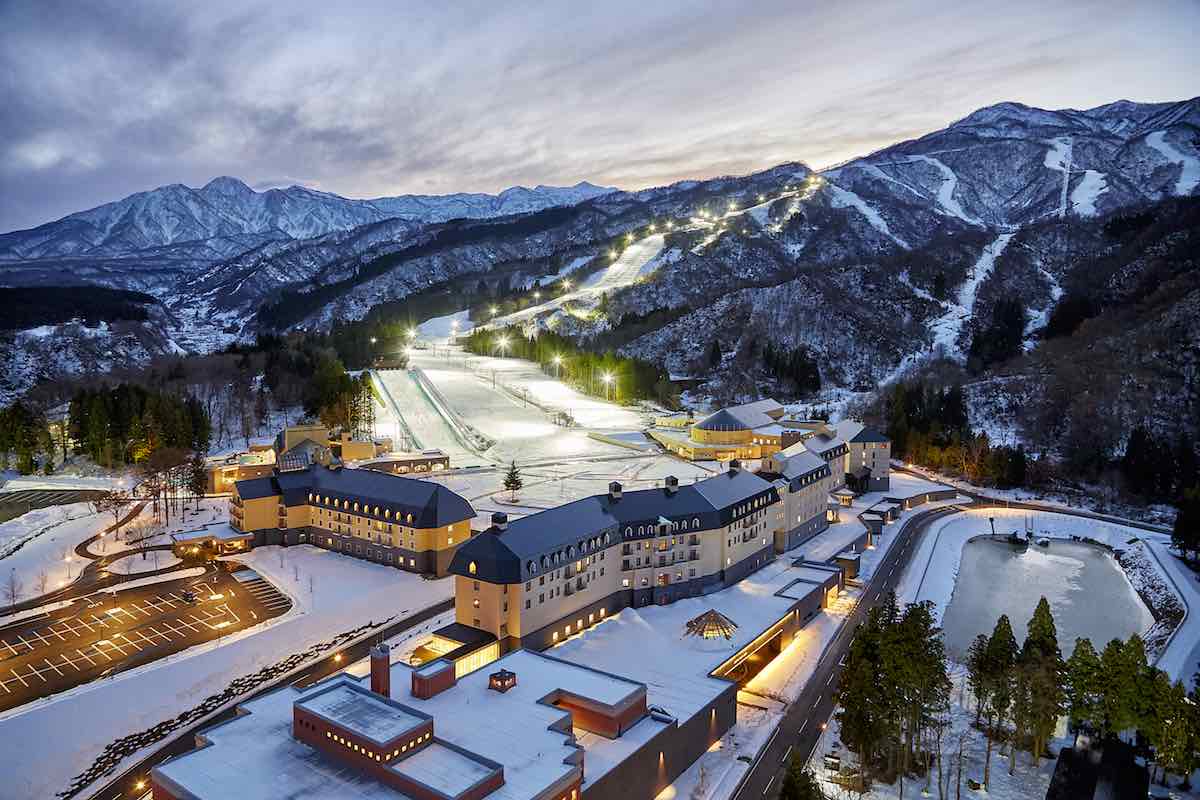George Parsons Inoue of Traditional Japanese Sake Brewery, Inoue Brewing: “My mission is to keep my family’s Sake business alive”
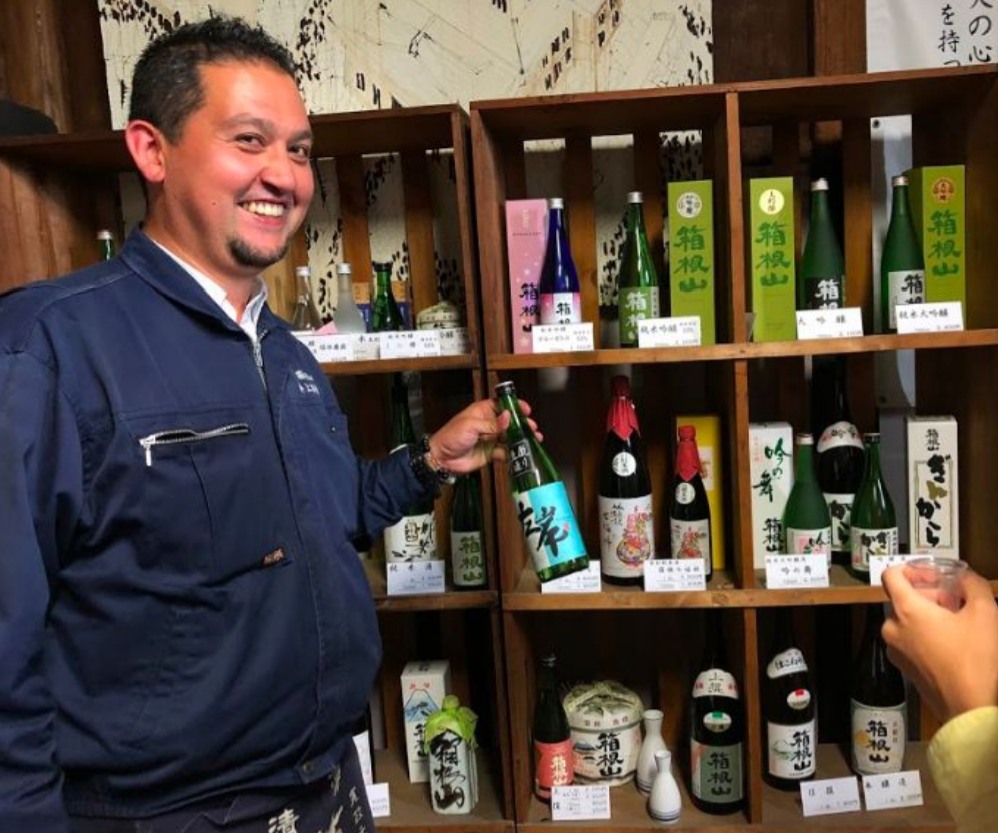
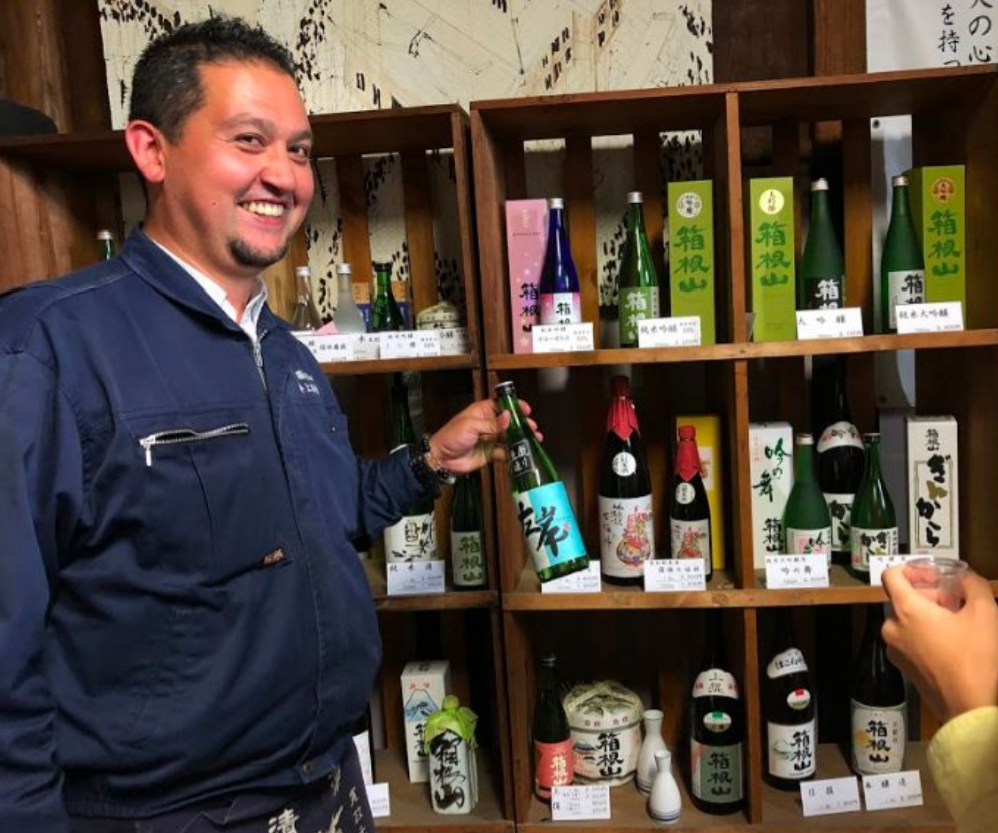
Meet playful and friendly George Parsons Inoue, a Sales manager of historical Sake brewery, Inoue Brewing, located in one of the most popular hot spring areas of Hakone in Kanagawa prefecture. He works on promoting his family’s Sake in Japan and overseas.
In this interview, George talks about the Sake business in Japan, gives us a tour of his family’s brewery, lets us experience Sake tasting, and also shows us around the brewery’s Sake rice paddies.
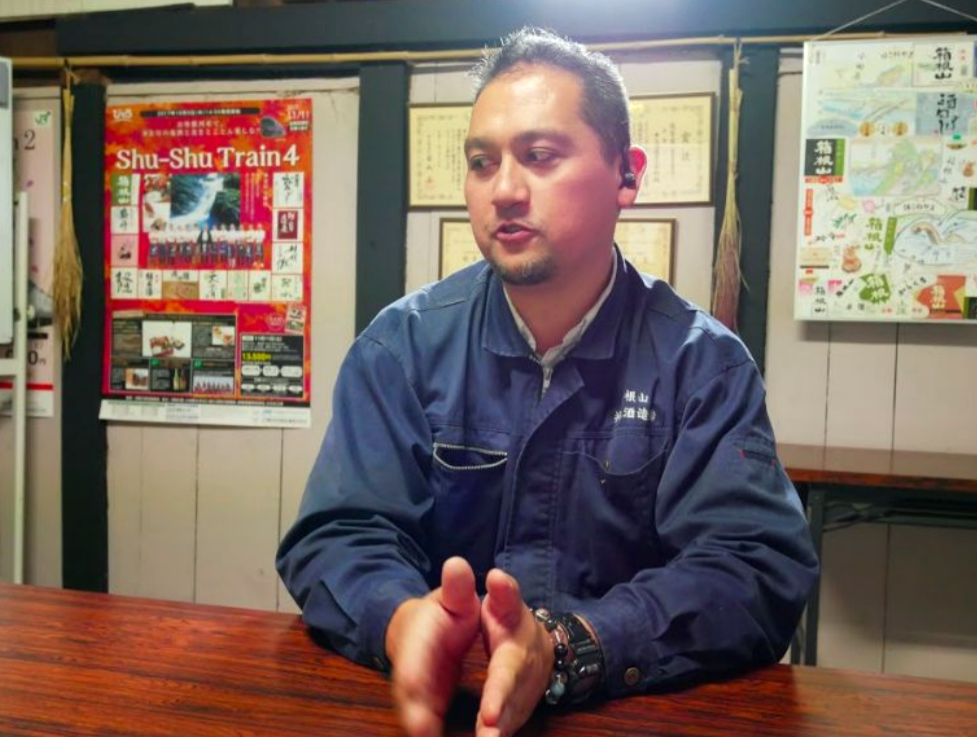
Interviewer: It says on your business card that Inoue Brewing started as a business during the first year of the Kansei era (1789) - that is more than 250 years ago!
George Parsons Inoue: Yes, we were established when France was going through the French Revolution in 1789-1790. Ever since, the Inoue’s have been making Sake at the foot of Hakone, at this very location. Now the seventh generation Inoue is president.
Interviewer: I realize you have the same last name as the brewery. Are you related to the president?
George Parsons Inoue: Yes, the current president is my mother’s brother, and the plan is for me to become president next. I have great memories of this place. I played here when I was little, and also helped with delivery when I came back to Japan for high school.
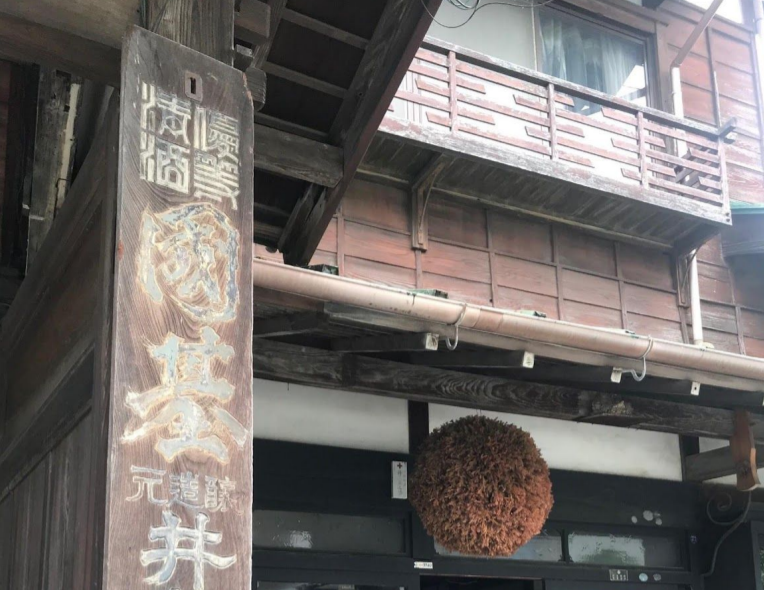
The front gate of Inoue Brewery. The big ball made of Japanese Cedar is hung at sake breweries in October as a sign that Sake-making has begun. At first, the leaves are green, but by the time the leaves turn completely brown in April, that year’s sake is ready to be served!
Interviewer: You didn’t always live here, correct?
George Parsons Inoue: No. My father is American and my mother is Japanese. I was born in Kobe then lived in Tokyo, and when I was 6 years old, we moved to New York City for my father’s job. We came back when I was 16, and then after several years, I went to school in Hawaii to study Hotel Management. But I ended up coming back here because I wanted to be part of running our family’s Sake brewery and keep this Japanese tradition alive. It has already been 15 years since I started to work here officially.
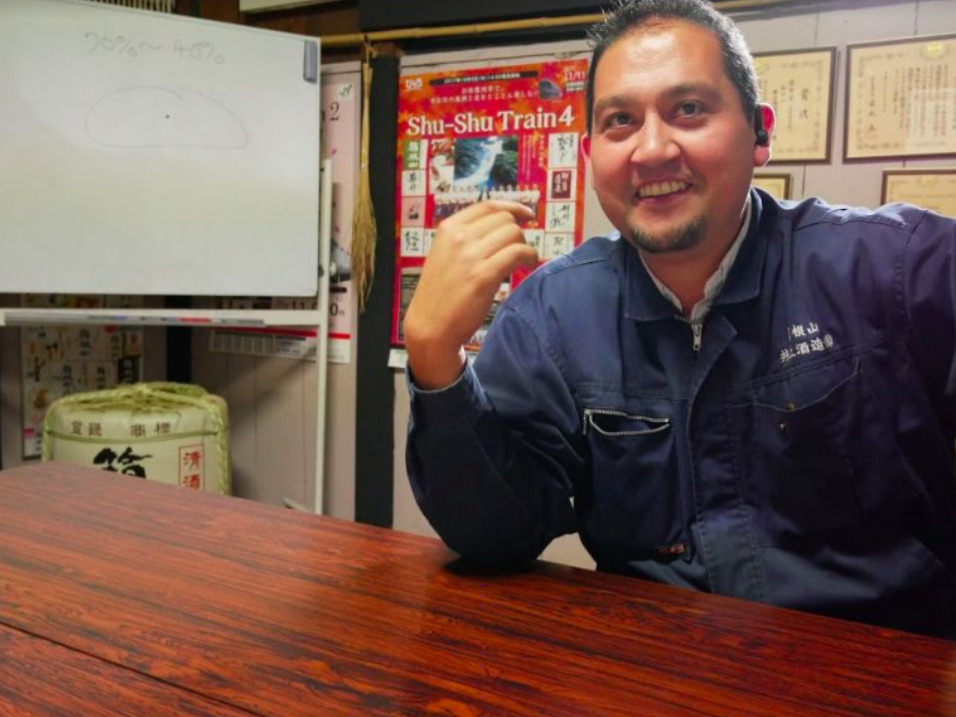
Interviewer:What do you mean by, “keep this Japanese tradition alive”? I thought that the Sake industry was booming.
George Parsons Inoue: The situation is actually very severe. There are only about 1,400 Sake breweries left in the country. That may sound like a lot, but in the late 1920’s, there were about 7,000 breweries. So, in just 100 years, more than 5,000 breweries closed down. That’s because back in the 1900’s, if a Japanese person wanted to drink alcohol, most would pick Sake. But now there is more of a variety like wine, beer, and whiskey available at a reasonable price to choose from. In addition, the Japanese population is decreasing, and Japanese people, especially the younger generation, do not consume much alcohol anymore. The price of rice has risen too. That’s why maintaining and running a Sake brewery has been challenging. Since the Japanese market is shrinking, we resumed our export business last year after a 20 year gap.
Interviewer:Which countries do you export to?
George Parsons Inoue: Until about 50 years ago, we used to export to Europe too but we stopped for a while, and last year we started to export to Hong Kong, and hopefully to Taiwan soon too. We use refrigerated air services when we export because we want to deliver our products fresh. Some people may not know, but it’s best to drink Sake as fast as possible once you purchase a bottle, preferably within half a year. It’s not harmful to drink after that but the taste slowly turns sour and then turns into vinegar.
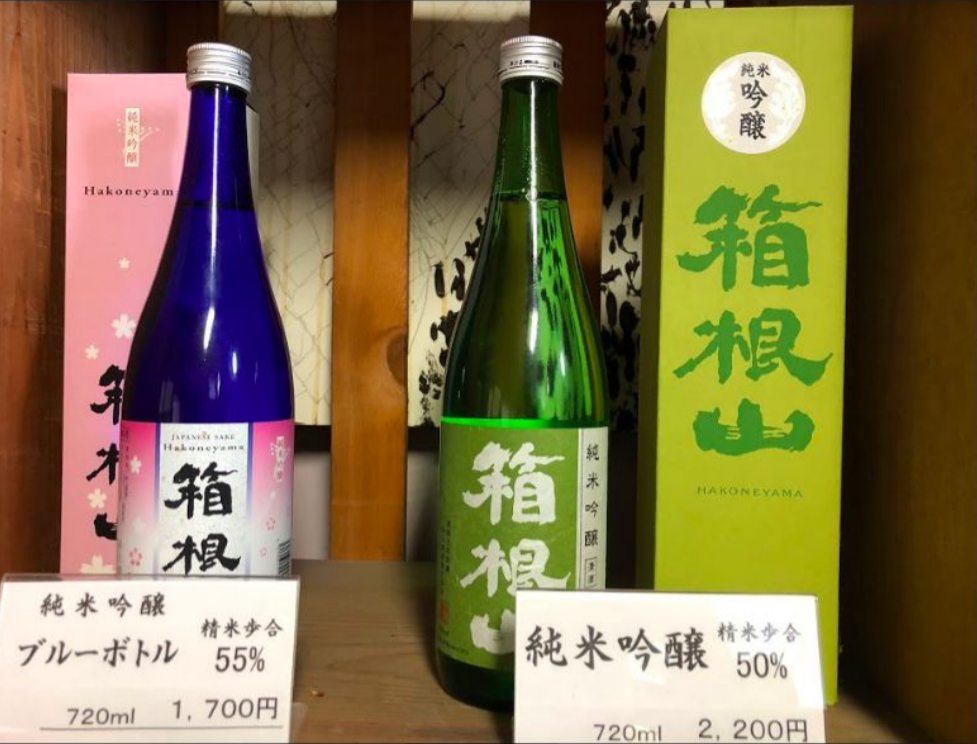
Hakoneyama, one of the brands that Inoue Brewing exports to Hong Kong
Interviewer:I’m sure many more people abroad are interested in Sake, now that Washoku (Japanese cuisine) has been added to the UNESCO Heritage List.
George:I certainly hope so. We believe that our Sake tastes best with great food! Our concept is to make Sake that beautifully blends in with Washoku, never killing the flavors of the food but rather, complementing it and making the meal complete.
Interviewer:Is Sake brewing complicated?
George: Yes, Sake is fermented liquor just like wine or beer, but the process of brewing Sake is actually much more complex. Here, let me give you a quick tour of our brewery to give you a better idea of what we do.
- Note that this is a summary of the tour and only a few of the brewing processes are introduced here. For a more detailed description of how Sake is brewed visit here.
Inoue Brewery Tour-
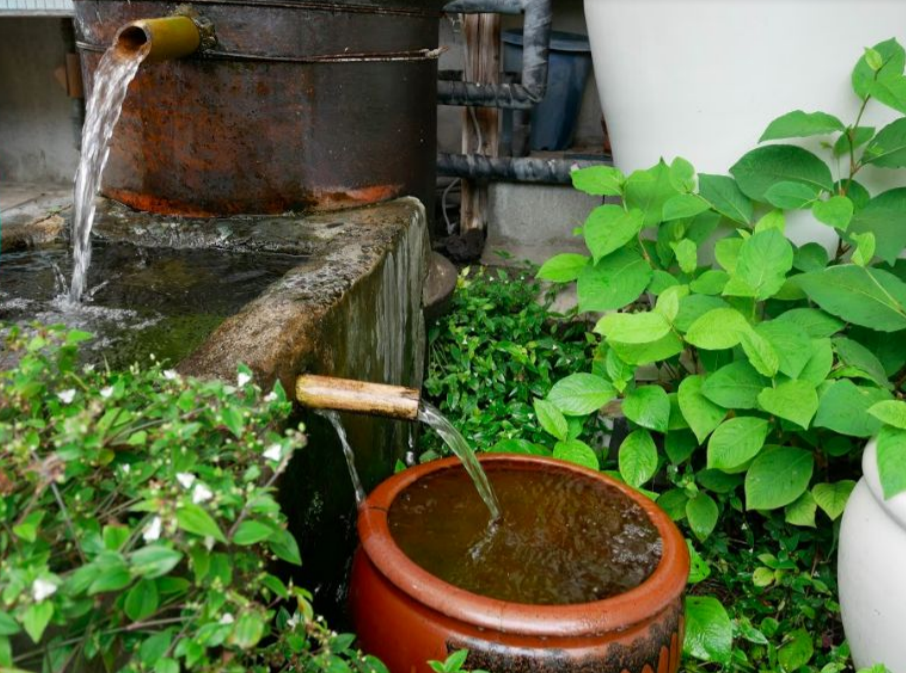
We use hard water from the mountains of Hakone to brew Sake. “It’s fruity and easy to drink, but unfortunately there’s no sake in it,” jokes George.
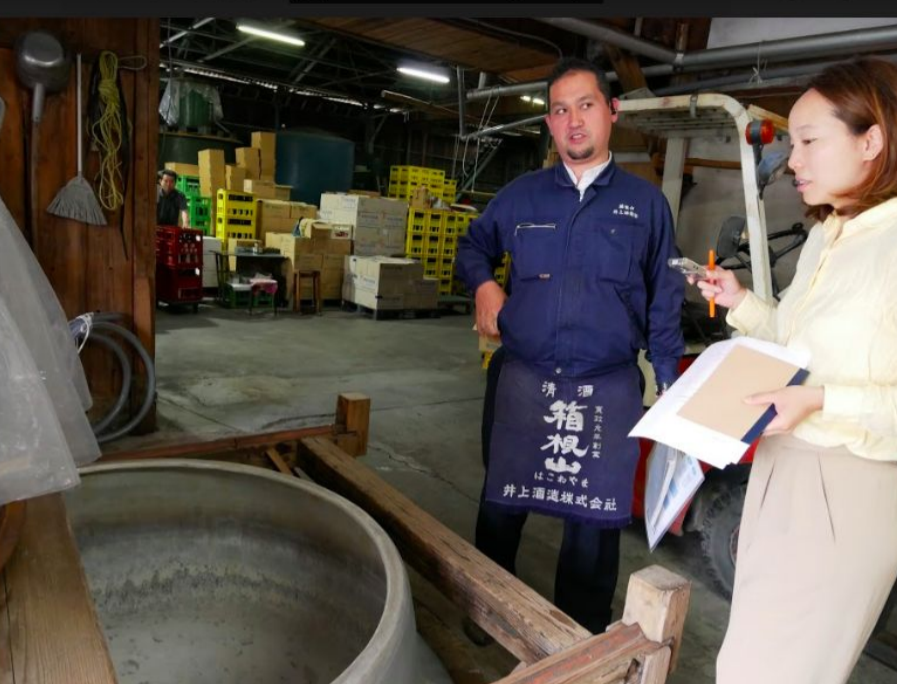
After the Sake rice is polished, it is steamed here so that the rice is more susceptible to Koji (a substance made by cultivating mold with rice and/or soya). “I always stand here like a monkey in a hot spring when we’re steaming the Sake rice in winter. It’s so warm,” laughs George.
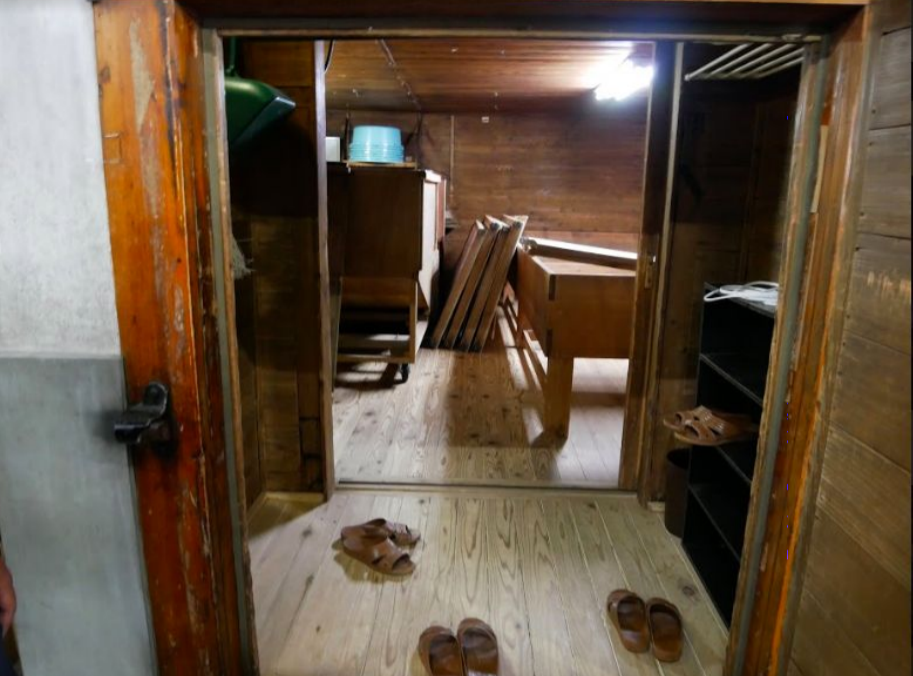
Koji is made here, in this Japanese cedar room where shoes are not allowed. George comments, “It’s hotter than summer inside! It’s like a sauna. It’s about 104 °F (40 °C).”
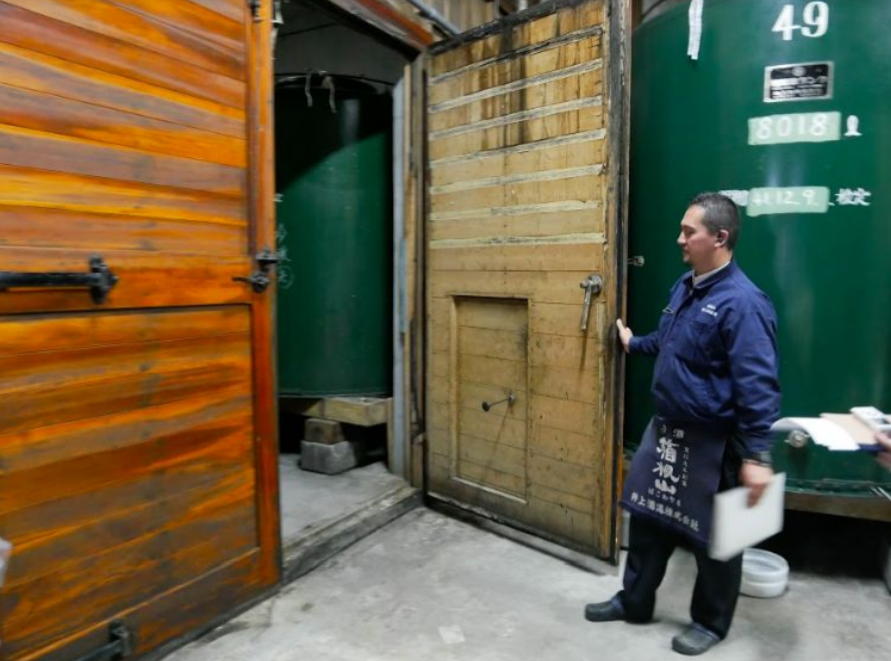
Sake is stored in big storage tanks. “This is our refrigerator. Temperature is key to the Sake brewing process. It’s about 68°F (20°C) here. “
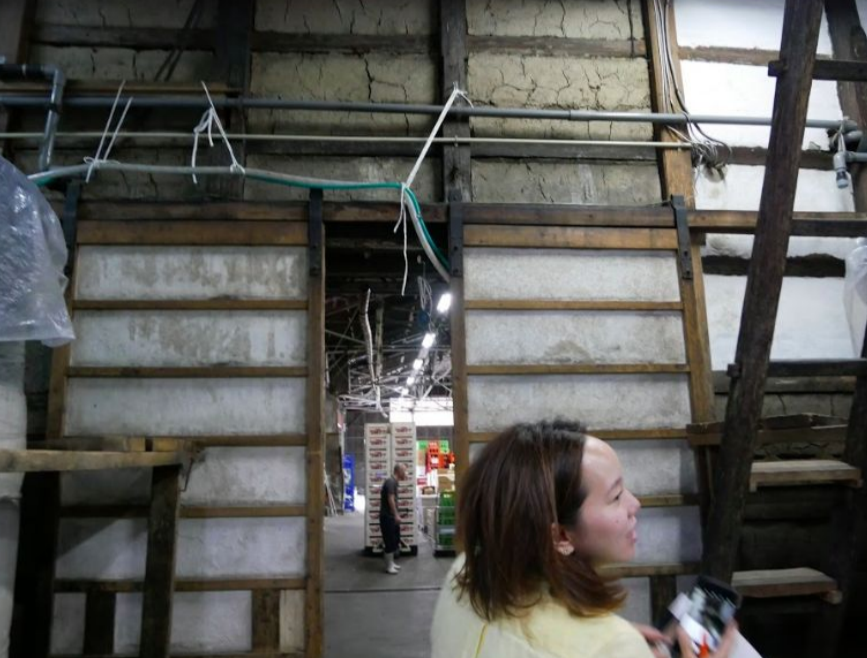
“Our brewery was once rebuilt after the Great Kanto Earthquake in 1923, but has remained the same ever since. We don’t see many dirt walls anymore,” comments George.
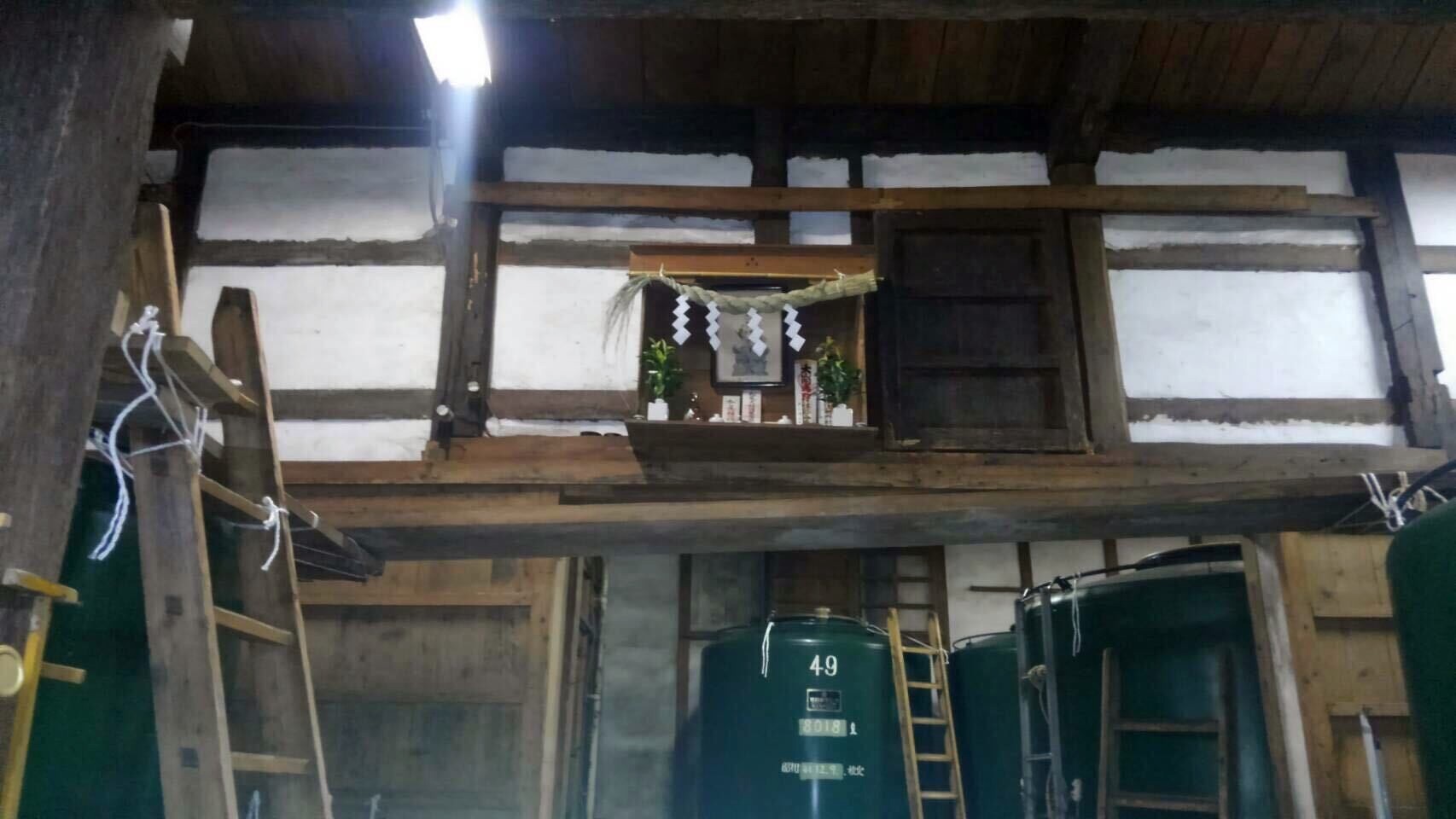
George explains, “All Sake breweries have Kamidana (household Shinto altars). At Inoue Brewery, we give water every day and new bamboo grass twice a month. In October, we all pray for a safe and successful brewing season.”
Sake Tasting Experience
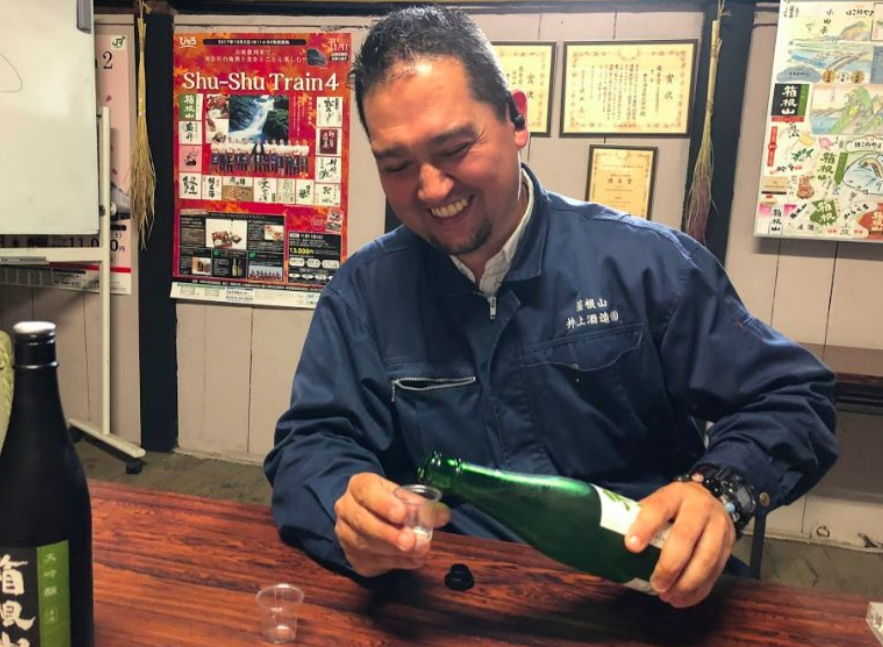
George Parsons Inoue: We make about 20 different kinds of Sake. There are two major factors people look at when classifying Sake. One is the ingredients. Sake that’s only made with rice and Koji is called Junmaishu. Otherwise, it’s made with rice, Koji and distilled alcohol, and will not have the word Junmaishu written in the label of the Sake. The other factor is the rice-polishing ratio or how much of the rice is polished for that Sake. The more it’s polished, the more luxurious. So the most luxurious Sake available is called the Junmai Daiginjou, and the rice used is 50% or less. That means only the middle portion of the rice is used to make Sake.
- For more information on different types of Sake, visit here
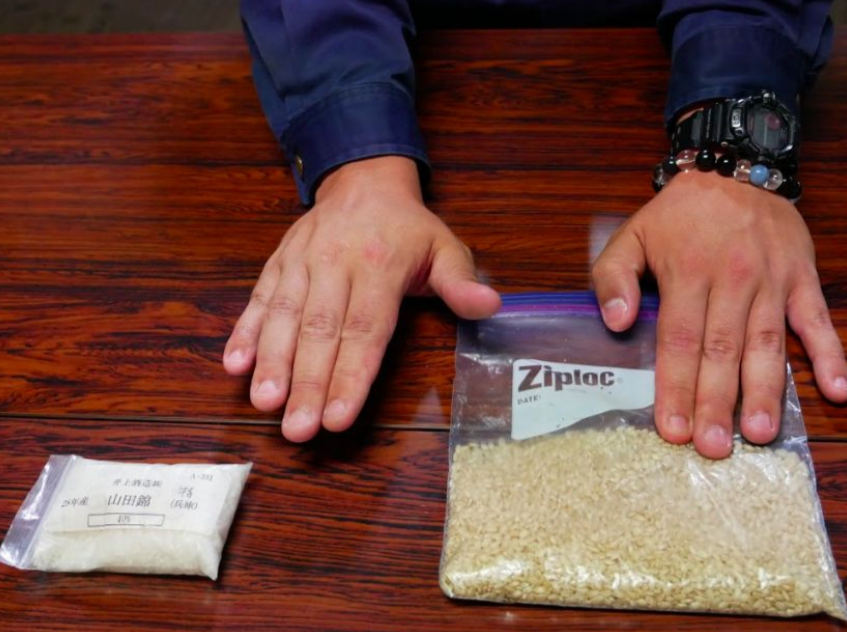
George shows us the difference between unpolished rice (right) and polished rice (left).
George Parsons Inoue: Way back in the day, before there were wonderful machines that polished our rice, I heard that people used to polish rice by chewing and spitting them out!
Interviewer:That’s shocking! Thank goodness for technology.
George Parsons Inoue: Before you drink Sake, you should know that you should use all of your senses when tasting it.. Before taking a sip, enjoy the aroma, and check the color (the younger the Sake the clearer). After sipping a little, enjoy the taste by rolling it around in your mouth, then gently let it slide down your throat. Some sake is sweet, others are dry, some are fruity, some are rich, and others are light.
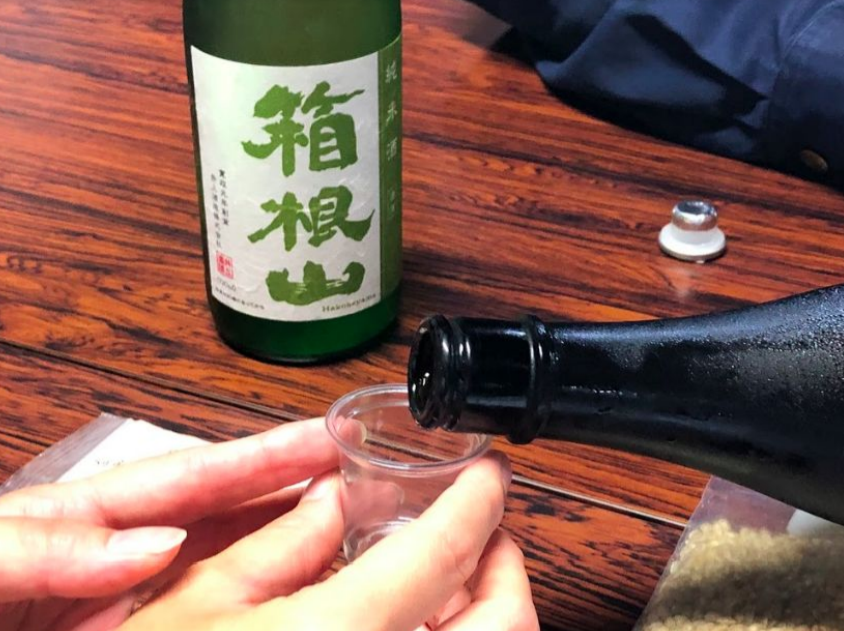
Tasting different types of Sake
Interviewer:Once you try sipping on different kinds of Sake, you can really tell the difference among them. This is very interesting. Is there any Sake in particular that you recommend to people?
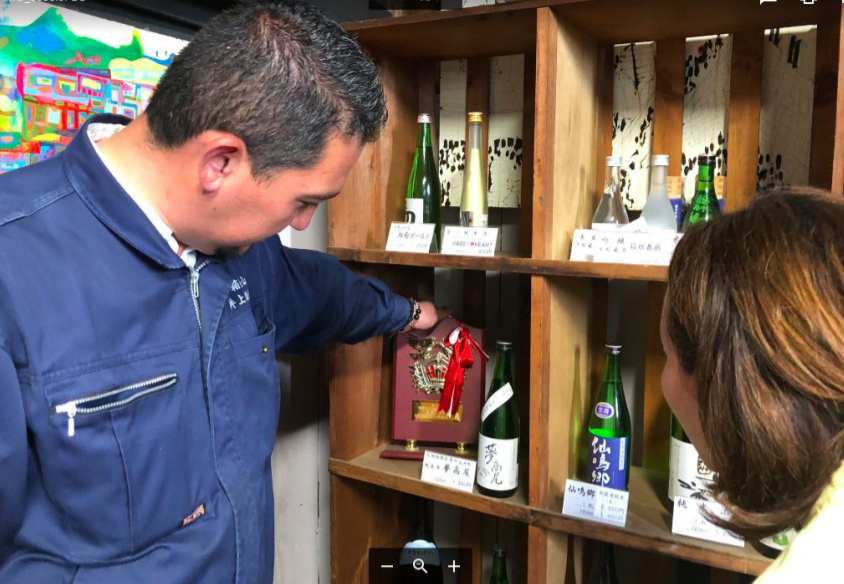
George explaining the different types of Sake that they sell.
George Parsons Inoue: Everything, of course, but it just depends on what you like. “Sweet Heart” is popular among people from overseas because it’s fruity and easy to drink, and “Yumetakao” and “Sagan” are made with the Sake rice we harvested ourselves so all ingredients are local. Our signature Sake, “Hakoneyama” is, of course, a popular choice. We’ve won prizes for some of them too. Since you’re all the way here, I’ll show you our rice paddies too!
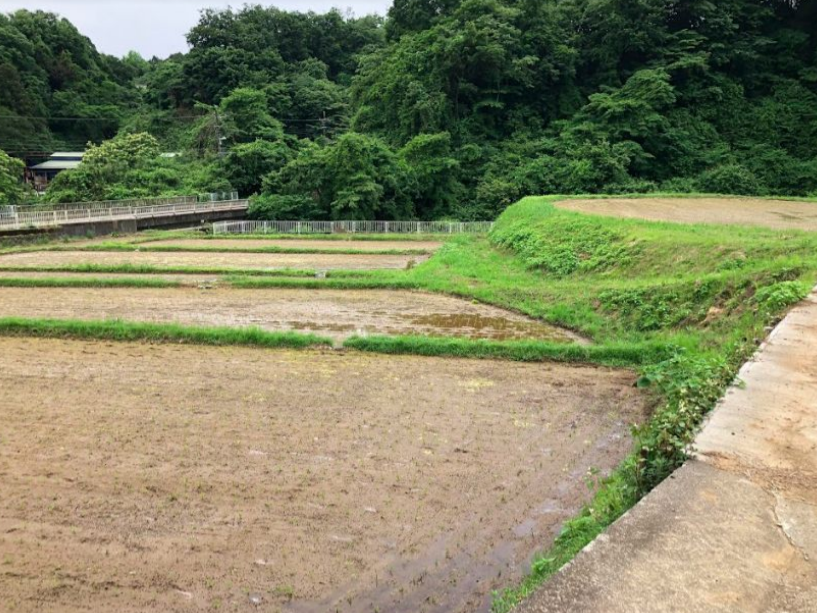
“Japanese killifish can only survive in areas with clean water, and our rice paddies are full of them!” says George
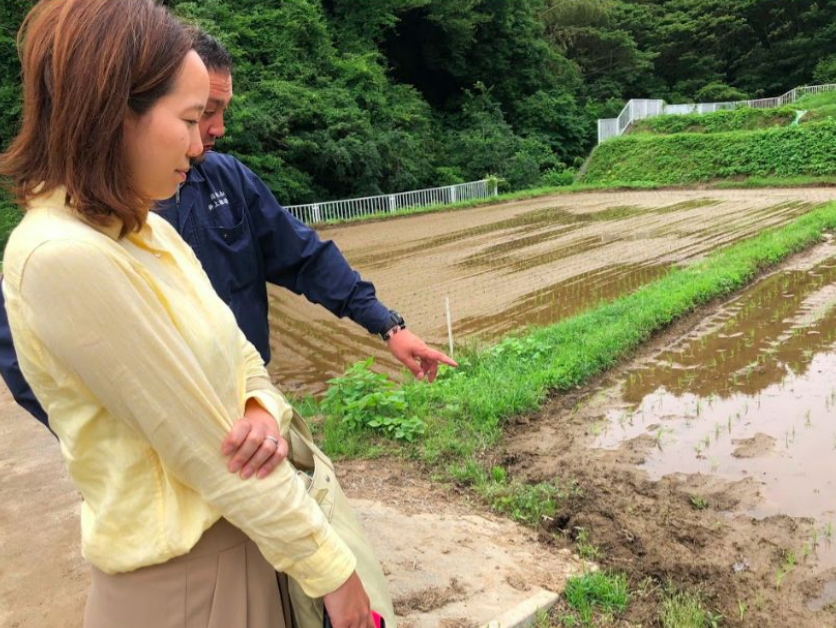
“We just recently finished with the rice-planting. After we harvest rice, sake making starts in October.”
Interviewer:Working for a Sake brewery, you must drink a lot every day!
George Parsons Inoue: People always laugh when I say this but I actually have a very low tolerance for alcohol! I love Sake, but I wish I had my father’s genes because he was able to drink so much!
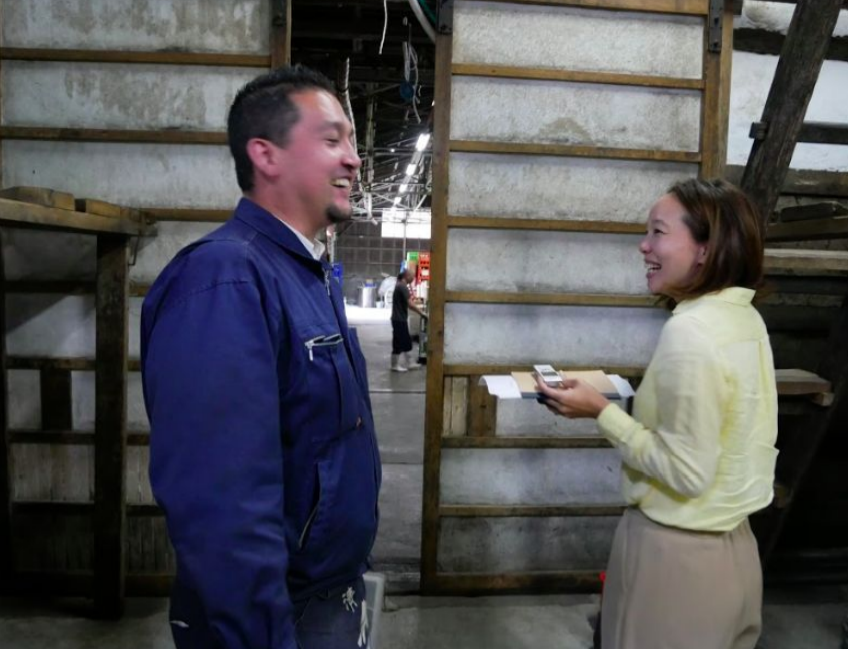
Inoue Brewing is the perfect traditional Sake brewery to visit and learn about the manufacturing process, its history, and tasting the delicious Sake they offer. Hear all about it from George Parsons Inoue, a man who’s passionate about running his family’s Sake brewery. Just 1.5 hours from the heart of Tokyo, Inoue Brewing is easy to access (just don’t miss trains because they don’t come often!) and also a great reason to stop by a nearby hot spring in the area (please don’t go in if you’ve had too much Sake).
Inoue Brewing
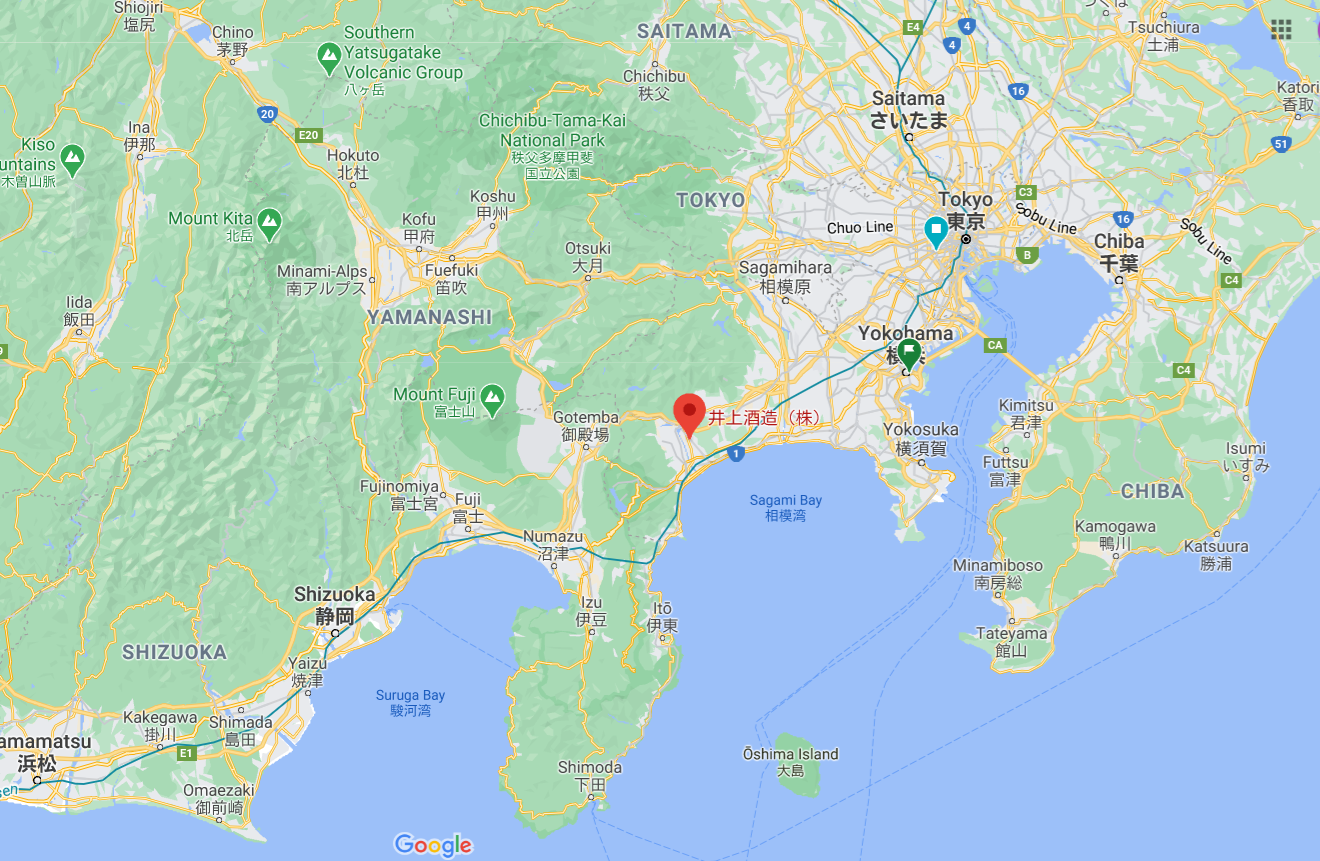
Access: Ride the JR Tokaido line from Tokyo station and get off at Kozu station (1 hr 12 min), then transfer to the Gotemba line to Kamioi station (8 min). Inoue Brewing is a 4-min walk from Kamioi Station.
Address: 552 Kamioi, Oi-machi, Ashigarakami-gun, Kanagawa
Email Address: inouesyuzousake@gmail.com
Inoue Brewing Tour and Sake Tasting Experience
Cost: Free
Tour Times: 10:30-/13:30-
*RSVP by email 1 to 2 weeks in advance
Reference List
URL: http://www.hakoneyama.co.jp/
Sponsored Links
Unmissable Tours
Expand your horizons by interacting with diversity. Take a look at guided tours on which you can connect personally with the guides and have truly extraordinary experiences.
Search
